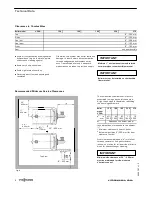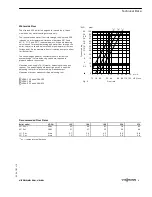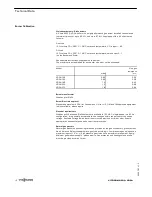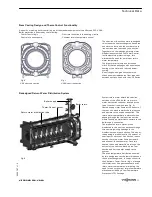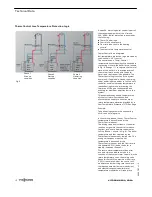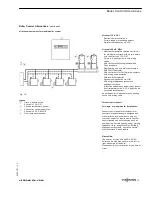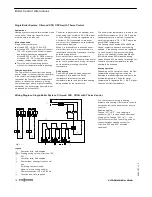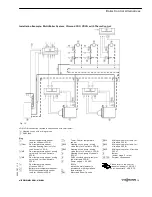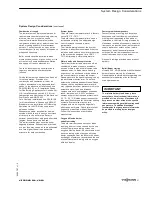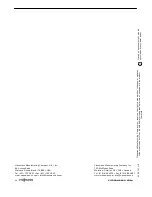
System Design Considerations
22
VITOROND 200, VD2A
System Design Considerations
(continued)
Sound attenuation
Please consult a professional engineer who
is specialized in noise attenuation for advice.
The burner/boiler systems, circulation
pumps and other auxilliary equipment used
in heating systems generate noise.
This noise is transferred from the boiler
room via floorboards, ceiling and walls to
neighboring rooms and via the flue gas
system as well as the ventilation air and
exhaust air apertures into other rooms and
into the open, where they may cause a
nuisance.
To avoid this from happening, additional
protective measures may be required which
should be considered at the design stage.
Subsequent measures to reduce noise
nuisance frequently require extensive effort
and expenditure.
Airborne noise attenuation
Frequently, modern boilers are equipped
with silencer hoods or sound insulated
ventilation air inlet housings. Additional
silencer hoods may be used where more
stringent anti-noise measures are required.
These measures may be implemented later
with minimal effort.
Silencer hoods are offered (usually by the
burner manufacturer) for various levels of
noise attenuation and are generally designed
and built in accordance with specific system
conditions (boiler type, fuel supply, building
characteristics).
For larger systems, it may be necessary to
route the ventilation air through a
sound-insulated channel, in order to avoid
noise nuisance outside the building.
Flue gas silencers are generally only required
where higher noise protection measures are
called for. Whether or not a flue gas silencer
is required can be difficult to predict,
because of the complexity of the creation
and propagation of flame noise, the
interaction between the burner, boiler and
the flue gas system as well as the operating
mode (flue gas system operating with
positive or negative pressure).
It is advisable, therefore, to assess the noise
emission into the neighborhood and to
consider the sound pressure level measured
at the flue gas system outlet. It should be
considered at the planning stage whether
silencers might become necessary later.
In planning for its possible use, it is
important that sufficient space for the flue
gas silencer is available behind the boiler.
Good engineering practice mandates that
the exhaust pressure drop of the silencer be
included in the vent size calculation.
Anti-vibration measures
Anti-vibration supports can be field supplied
as an economical and effective solution to
combat noise generated.
When sizing such supports, take the entire
operating weight of the boiler system and,
when using longitudinal anti-vibration
brackets, the condition of the supporting
surface into consideration.
Effective anti-vibration measures are
particularly important when installing boilers
into an attic. Compensators may be used to
physically separate the combustion
equipment from the building.
These should be installed into the boiler
flow, return and safety pipe and as near as
possible to the boiler.
Also insulate any braces or hanging
arrangements, if installed, against sound/
vibration transmission to the building.
Seismic restrainer
Viessmann offers an engineered seismic
restraining kit for compliance with local
seismic requirements for buildings and
structures. Please contact your local
Viessmann Sales Representative for more
details.
Warranty
Our warranty does not cover damages
resulting from the following:
–
Corrosion caused by flue gas condensation
due to low boiler water and/or return
water temperatures.
–
Operation with contaminated fill and
supplementary feed water.
5
3
5
4
7
8
7
v
1
.2

